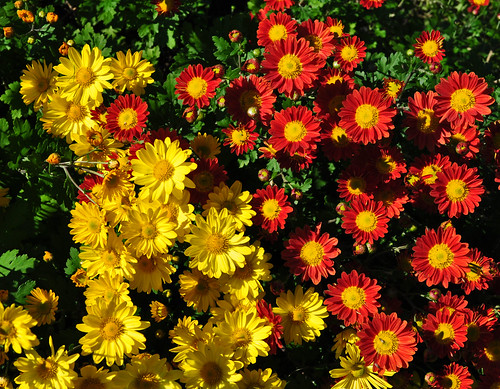
Blackberry Lily (Belamcanda chinensis)
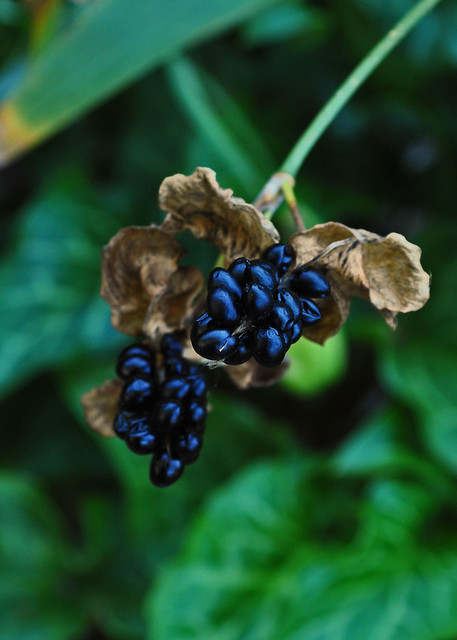
Even if Crape Myrtles (Lagerstroemia) never flowered, I think I would grow them just to have trunks like this in the garden, talk about bones and structure!
I believe this is Boston Ivy (Parthenocissus tricuspidata) which is not native to Boston, but China, Japan and Korea.
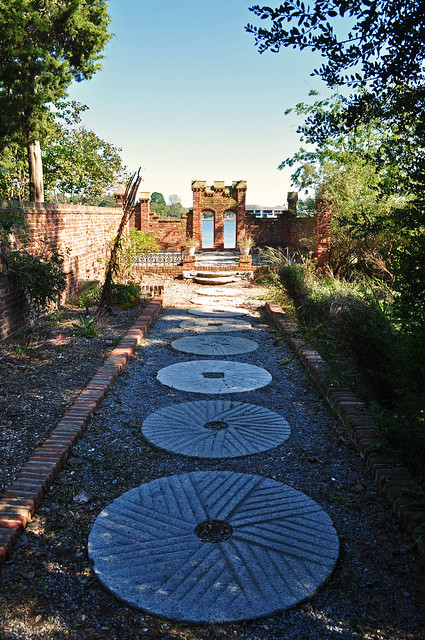
Beyond the garden walls are the wilder parts of the Hermitage. There is a very successful living shoreline restoration project here. Faced with erosion from the Lafayette River, they decided several years ago to forgo bulkheading and riprap and instead opted for creating a living shoreline that not only prevents erosion, but creates (or more accurately re-creates) natural habitat.
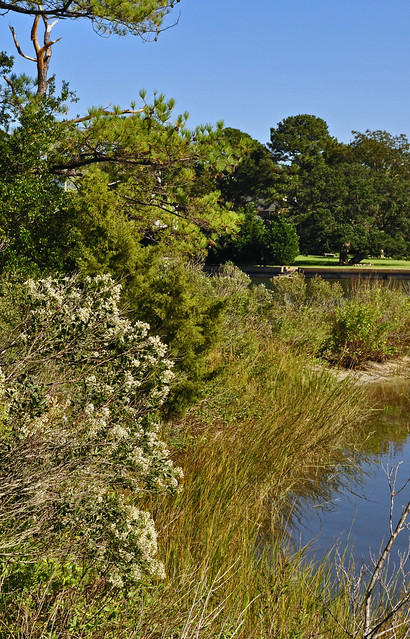
One of my favorite unsung native shrubs is the Saltbush (Baccharis halimifolia). Regular readers may be tired of hearing about this plant, but it is sublime right now, ringing local shorelines with white clouds.
Osage Orange (Maclura pomifera) is not originally native to Virginia, but came from the southern plains. It makes a good projectile to lob at a sibling if you are so inclined. Thank you Mssrs. Lewis, Clark and Jefferson.
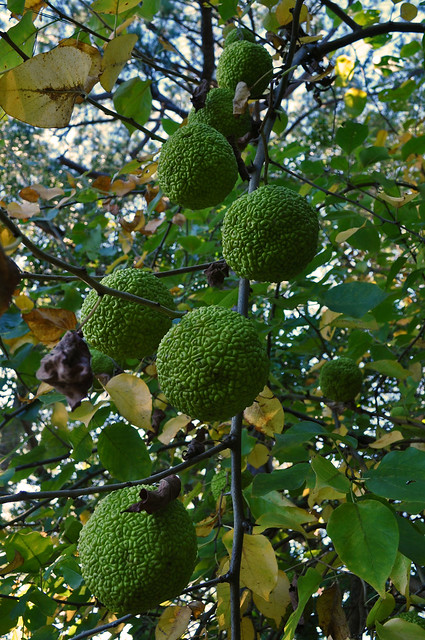
The wooded areas of the hermitage are scene to an epic battle of the invasives, including Privet (Ligustrum sinensis), English Ivy (Hedera helix) and the currently colorful, hometown favorite, Virginia Creeper (Parthenocissus quinquefolia).
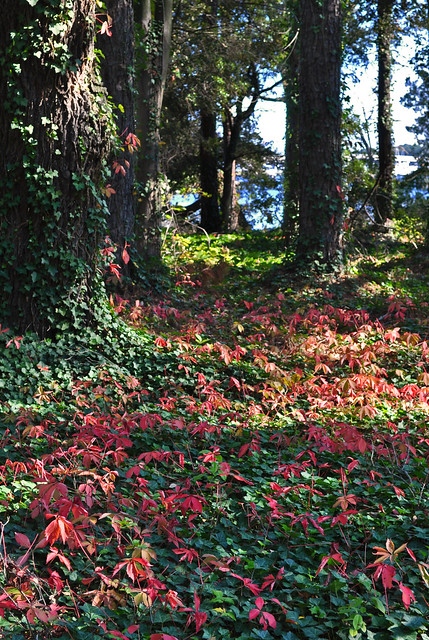

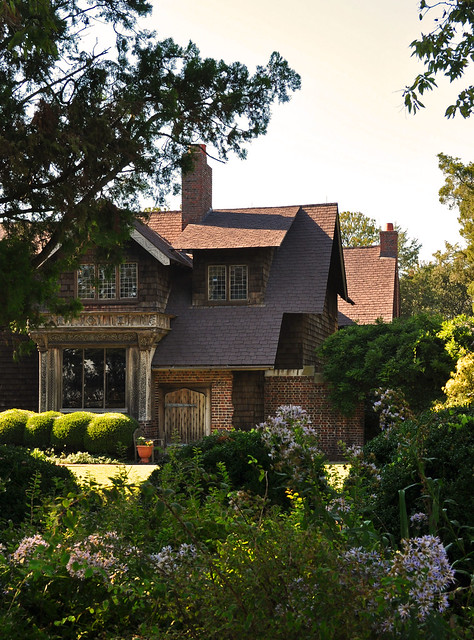
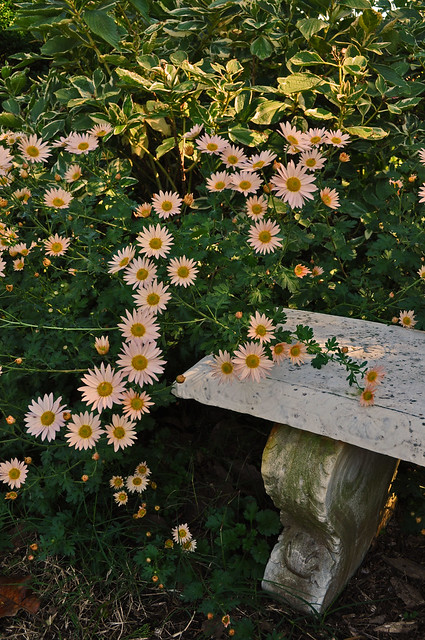
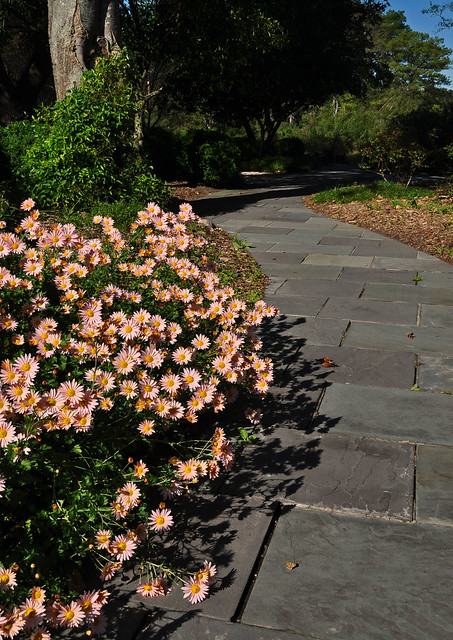
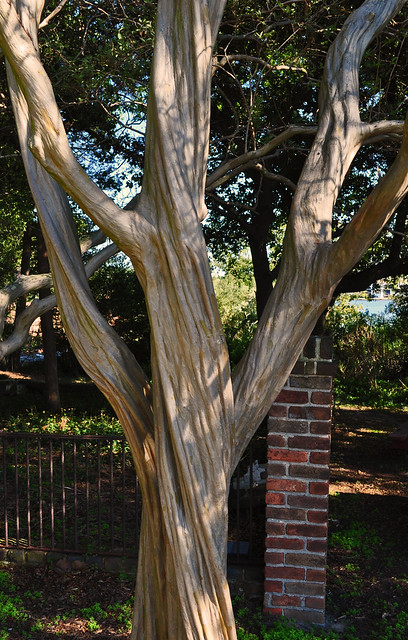
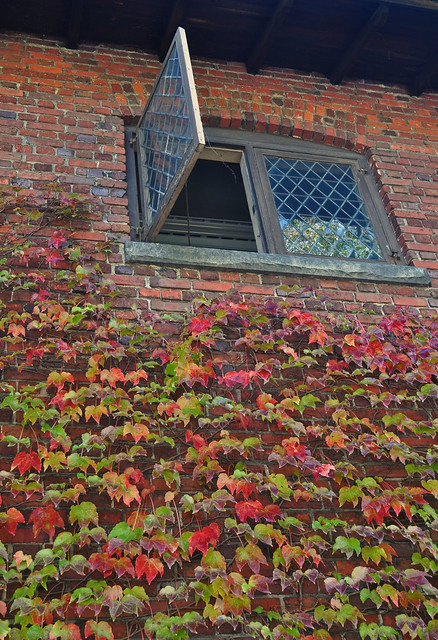
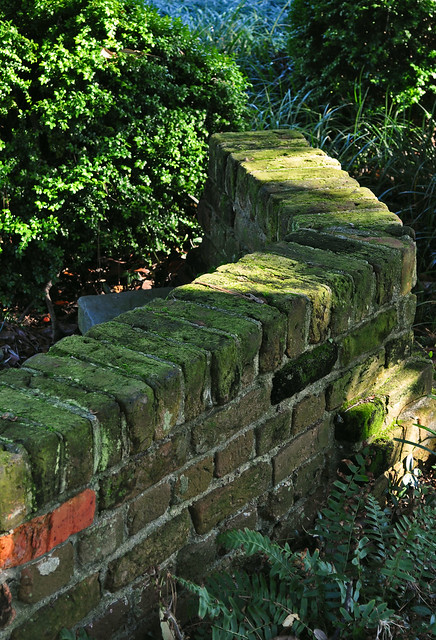
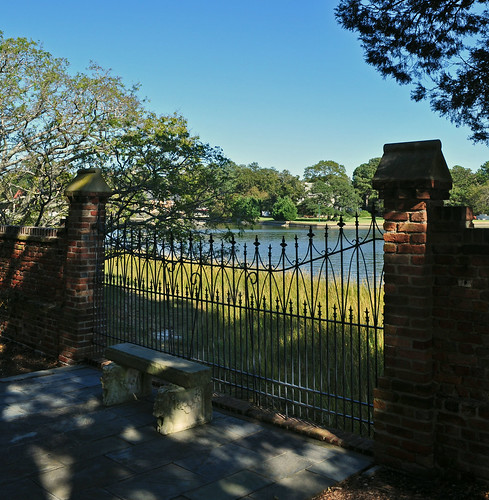
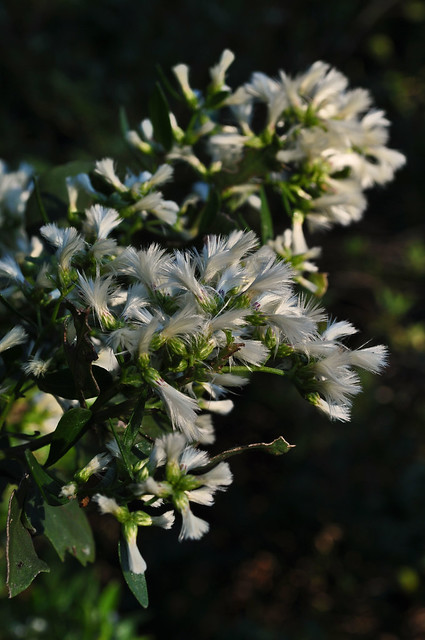




I've loved Baccharis since I was a young boy, but no one could tell me its name. I'm glad its finally beginning to appear in gardens (e.g., Chanticleer, High Line). But I've not seen it for sale? Is it available in the nursery trade, or should I just scatter some seed?
ReplyDeleteit's great to hear about the shoreline restoration! Wetlands are so beautiful with such an array of plants and animals. i've heard them called the planet's kidneys...taking good care of them is important! the hermitage is the type of place i adore to visit. how cool that you can ride a bike there!
ReplyDeleteI haven't been over there in several years. Thanks for reminding me about it. I was really surprised to see the Osage Orange. I read about the Pearl program yesterday in the Lynnhaven River Now newsletter and am happy to say that we meet the specs. A great deal of the lot our house is on is actually a marsh that supports a lot of marine life and enables us to go without bulkhead. But every year it seems like I see more people along the Lynnhaven messing with their natural barrier wetlands.
ReplyDeleteI read an article in a gardening magazine on "sustainable landscapes". It recommended all non-native plants (tough and drought resistant) and turf grass as providing many environmental benefits like erosion control and elimination of greenhouse gases. Arghh. It is nice to know that someone who really understands the problem and the solutions is working on the issue. It is definitely an uphill battle.
ReplyDeleteWhat a beautiful place! Loved seeing all the pictures, but especially the pathway, the Boston ivy, and for some reason - I love the invasives! Of course, I wouldn't want that on my land, but it is beautiful. I agree with you, too, about the crape myrtles. I think their trunks are beautiful. Good luck trying to convert the grass lovers!
ReplyDeleteGreat photos as always, Les. Glad you are on this. You've got a great handle. Fortunately for our area, we grow many natives and non-natives well, with often many natives being oppressively abundant, and with many non-natives being pleasantly slow and contained. Go figure. But natives are great to structure a landscape with, and highlighting with nons. As for lawns, we all know St Augustine has been the perennial winner here, then Bermuda, Zoysia, etc. The home I grew up in has had St Auy grass for 60 years, with NO fertilizers or extra care, just smart cutting.
ReplyDeleteJames,
ReplyDeleteYou should scatter, definately scatter.
Darcia,
I like the kidney analogy, and yes it is great such a place is bike-close.
Chris,
Your neighbors run the risk of provoking the rath of several intractable govt. and municipal agencies when they tamper with the shoreline.
Carolyn,
Though they are small, I do see cracks in traditional gardening practices that have been less then environmentally friendly.
Holley,
Yes there is something to be said for plants that are vigorous, even if they are occasionally invasive.
John,
You are right to bring up the fact that just because something is native, does not always make it the best choice. Many are indeed garden thugs.
Les
Hi Les, You must be commended for continuing to pursue more environmentally friendly ways to maintain river-front properties.
ReplyDeleteI also have gardens that I like to return to more than once. A garden can look so completely different, depending on the time of year. I find that there is always seems to be something new to discover through the camera lens. I can also see why you like the Saltbush (Baccharis halimifolia). It's beautiful!
What a beautiful place. I too battle Virginia Creeper here. It has a way of sneaking up on you.
ReplyDeleteCycling to a meeting - OK, done that - but at a picnic table? There? Wonderful. I now want a Osage Orange, I'm sure my nephews could create chaos with the fruit given half a chance. Good luck with the project, so important, and yet so political. We do, as a species, seem very bad at protecting our water edges, whether saline or not. I've had some splendid arguments with people about buying farmed prawns from Indonesia, Thailand etc. where the prawn farms are created at the expense of the mangrove forests which ironically are what helps protect against storm surges and tsunami, and don't get me started on farmed salmon and the effect of the "waste" on the lochs around Scotland... Beautiful photographs, and I'm cheering your campaign on, albeit from a distance.
ReplyDeleteGreat day to cycle to your meeting. I just love The Hermitage but have not seen their new shoreline restoration yet. I have a current dilemma in that direction but challenging in that we have a steep bank and very sandy (dry) shade. I am trying to get away from invasives although the English Ivy is currently helping hold the bank. Any plant thoughts for natives? One of my current reads, that is really challenging the way I think about and approach gardens design is Doug Tallamy's book "Bringing Nature Home". It makes me want to rethink or eliminate every "alien" or invasive plant in my yard and really focus on natives, especially those that are highly beneficial to wildlife in some way. I bet this group you met with was a great think tank in that direction. Gorgeous photos by the way.........
ReplyDeleteThese are incredible pictures. The first couple combos are really really nice. The orange and the yellow patches really look great together. Looks like a lot of fun.
ReplyDeleteWhat a beautiful place! I LOVE that house.
ReplyDeleteAround here folks complain about lake pollution and algae and yet it is so hard to get them understand they are part of the problem with lawn fertilizers etc. A long slow process . . .
ReplyDeleteI loved your story in pictures, you have my Apoño to continue your fight
ReplyDeleteUn saludo